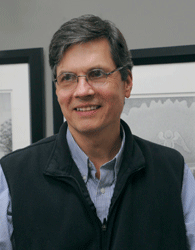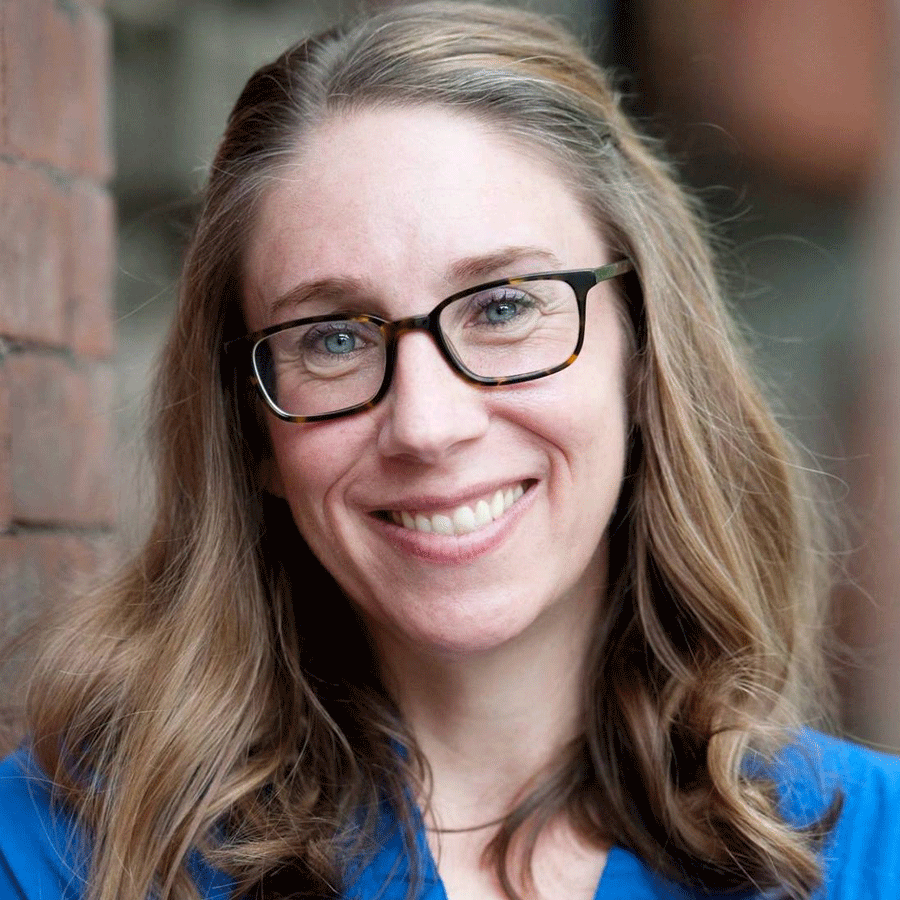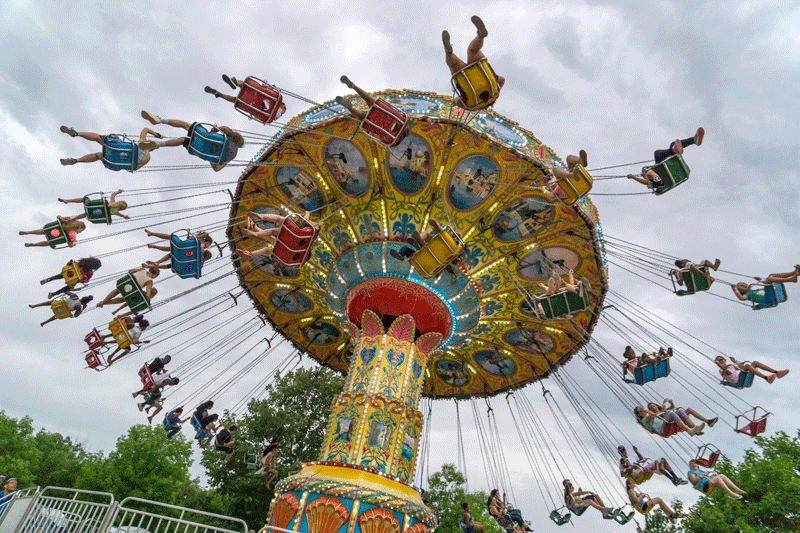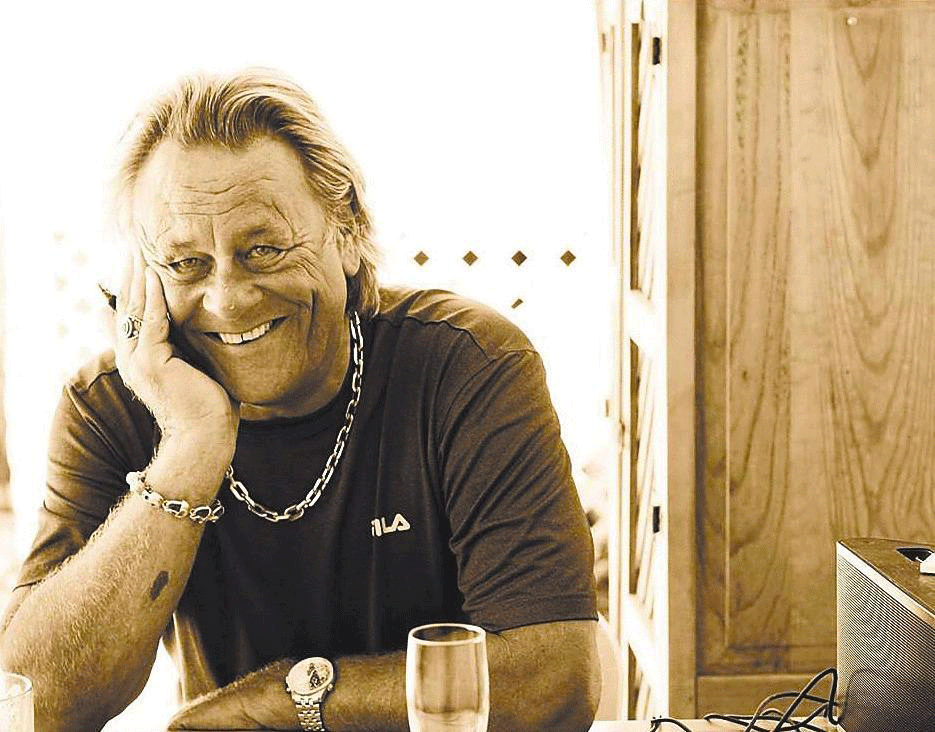Art has a way of sweeping us up as children, letting us ride its wave as far as we are willing to go.
For some, the wave never becomes more than an assignment or rainy day activity. Some of us are intrigued but hop off the wave at different spots during elementary, middle or high school.
Others of us ride it our whole lives.
For John Hrehov, the wave came early. Now an avid painter and illustrator, Hrehov’s use of color, symmetry and perfectionism is inspired by the world around him.
The wave caught up with Hrehov while growing up in Cleveland, Ohio. His interest in art strengthened in junior high and high school, and he attended the Cleveland Institute of Art to attain his BFA in Painting. He then ventured onward to receive his MFA at the University of Illinois. Now a resident of Fort Wayne and the current chair of IPFW’s Department of Fine Arts, Hrehov has been teaching painting and drawing at IPFW for the last 25 years.
A quarter of a century devoted to this town and art education is not something to take lightly. As art education is seemingly being de-emphasized nationally, it’s educators like Hrehov who combine the skills, experience and strength to keep inspiration moving forward.
“As an artist, teaching has always inspired me,” he said via email. “When I work with students, particularly in the beginning levels of painting and drawing, it reinforces what I find important. It helps to clarify in my mind what I love about the process. The energy created does spill over into my work. I hope the enthusiasm I feel is picked up by the students I teach.”
The Midwest plays an important role in Hrehov’s work.
“I’m from the Midwest and have lived here all my life. I lived in the inner city of Cleveland until I was 11; then my family moved to the suburbs. Ever since that point, the suburban aesthetic always has struck me as odd, even alien. I’m still attracted to the look of basic geometric homes with triangular roofs and flat, treeless streets. There’s something almost surreal about it, almost comical,” he said.
This inspiration can be seen in some of Hrehov’s works like “After the Flood.” In this oil-on-canvas-on-panel painting created in 2002, you can see his attraction to suburban geometry while incorporating nature right alongside it.
Hrehov’s paintings are pristine, so clean and articulate that upon first glance you might not even take them for paintings. Straight lines and patterns jump out of the paintings with a software-tint to them. But rest assured: all paintings are done by hand.
“I’m a big believer in preliminary drawings and working on a design until it’s to my liking,” said Hrehov.
In many cases he does a charcoal drawing before ever touching the paints to help him pin down and feel out what’s to come next.
“As for software, I’m as old school as it gets. I use Photoshop when required for exhibitions and social media, but with preliminary studies it is more practical to work with traditional media,” he said. “I hear from people about the meticulous crafting and precision of my works; that may be one thing that sets my work apart.”
When viewing a piece like “Under Shut Eyes,” it’s hard to imagine the steady hand that creates such triangles, diamonds and expanses of pattern. Whether there are tools used to keep these aspects in line (no pun intended) or not is simply a secret.
Divulging the artistic process seems to be a topic that many artists speak of in an ethereal way, or they simply give a backstory of where their ideas came from. Rarely does a brand of paintbrush or a certain flick of the wrist come into play when an artist is asked to describe his process. You can find this information, but it isn’t usually given without some prodding.
Hrehov would rather travel down the rabbit hole about his inspiration.
“Inspiration is a funny thing. I find inspiration for my work in the world around me, especially when filtered through the lens of art history,” he said. “I preserve sketchbooks, mainly idea books and record things I see and find curious. In these books, I’ll record small, very crude sketches. I like to review these sketches and see which idea grabs me periodically. A simple design is elaborated upon and developed. I try and keep the spirit of the initial thumbnail sketch to maintain the integrity of the idea. The works then are embellished in whatever medium I may be using: oil, charcoal, pen and ink.”
While everyday life can be a constant inspiration for art, looking to the past can be just as beneficial.
“When I was creating landscapes, I looked to the artists of the past who inspire me like Giorgio de Chirico or Edward Hopper. I’m now generating still-life paintings, and find inspiration from Giorgio Morandi and Jean-Baptiste-Sim?on Chardin,” he explained.
When examined, it’s even more apparent that Hrehov is a fan of the aforementioned Giorgios. When examining their works, one cannot help but combine them to see where Hrehov fits in. De Chirico’s colors are much more vibrant than Hrehov’s, combing darker shadows that contrast with bright, deep colors. These colors are present in Hrehov’s landscapes, but his shadows are much more realistic, blending in or even becoming nonexistent at times. De Chirico’s subjects are recognizable, but the combination or placement of them makes it clear why he heavily influenced the surrealist movement.
Morandi’s work is far more illustrative and basic. The shapes aren’t as clean, and the colors are barely there. Hrehov expands upon this style in his still life work by adding those patterns mentioned earlier and combining the colors more akin to de Chirico’s work.
Like all artists, the influences are there. They’re apparent and sometimes scream out to the viewer. It’s the combination of these elements of influence – with vast, eclectic and sometimes mundane inspirations – that lead to the creation of something with promise. With decades of experience and obviously a surplus of talent, Hrehov is still riding the wave that’s taken him this far. Through his work, both on the canvas and in the classroom, he’s inspiring others to keep riding their waves too.
Hrehov is represented by Bibro Fine Art Inc. in New York. His work can be viewed at DeniseBibroFineArt.com, JohnHrehov.com and on Instagram at @JohnHrehov_Art.
 Submit Your Event
Submit Your Event



